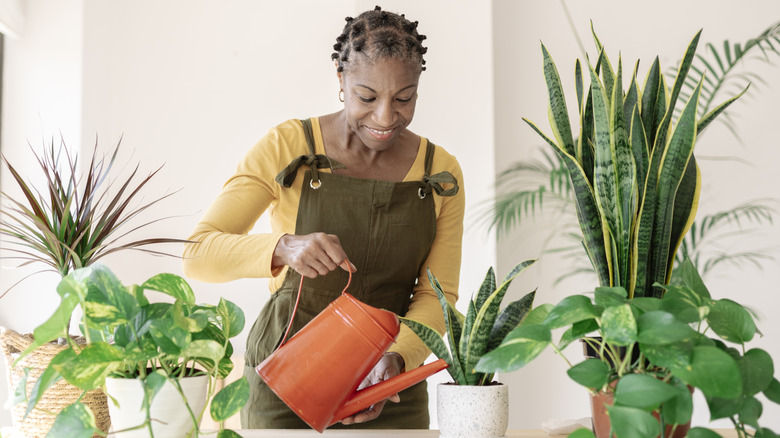Houseplant Self-Watering Systems Can Save You Time, But TikTok Says It's Not Worth It
If someone could invent a way to determine when a plant needs to be watered and exactly how much water it needs, they'd be a billionaire. But since none of us are plant mind readers, we have a wide range of self-watering options that can help minimize our watering woes. We have simple watering spikes or bulbs that sit halfway into the soil, as well as high-tech app-controlled drip irrigation systems. There's also a hack that'll keep all of your indoor plants alive while you're on vacation.
Another option is the trendy self-watering planters that supposedly take care of themselves, which use a wicking system that draws water from a reservoir to the soil and the plant's roots. These types of accessories are now widely available, but should you use self-watering planters?
If you ask TikTok user, tannertheplanter, his answer is to use them with caution. In his video, he explains that his complaint is not with the actual product, but with the way companies market them. Plant owners should not be continually storing water in the reservoir, as companies tend to advertise. Doing so keeps the soil overly wet, which leads to root rot and fungus gnats. He says, "You just get a company like this that has a bunch of money to throw around. That creates a great marketing program and tricks people into thinking their houseplant journey is going to be really, really easy, and they're just setting themselves up for failure."
Tips to properly use a self-watering plant
As tannertheplanter emphasizes, the pots themselves aren't faulty — consumers just need to understand how to use them properly. He advises to "Use them as you would any potted plant and only water when the plant needs [to be] watered. Then you dump water in the reservoir and it sucks it up from the bottom." Essentially, you're not saving as much time as these plant companies are leading consumers to believe.
Another tip is to only partially fill the reservoir, which gives your plant less water to absorb, but still enough to nourish its roots. Many self-watering planters have indicator levels that allow you to monitor how much water is in the reservoir and how quickly your plant is soaking up the water.
If the soil is consistently waterlogged, your plant also may need more light to compensate for the amount of water it's getting. If you've given your plant extra light and the soil remains overly wet, drain the planter and fill it only halfway during subsequent waterings. Also, use potting soil that includes vermiculite or perlite, coir or peat moss, and compost — a recipe that encourages oxygen flow and drainage, while holding moisture.
